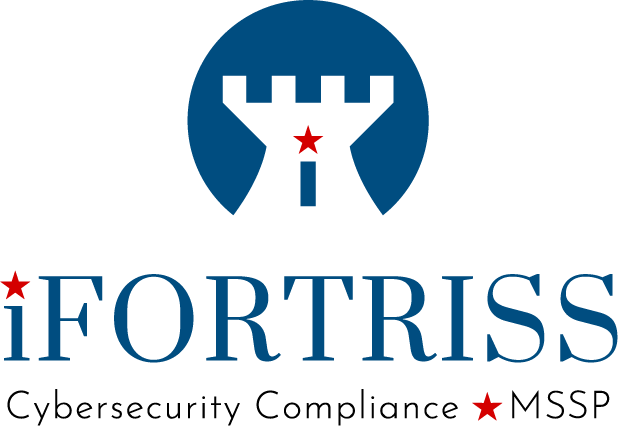
Cybersecurity GRC for Defense Contractors
Cybersecurity Governance Risk & Compliance (C-GRC) is essential for an organization’s strategy to protect sensitive data, maintain regulatory compliance, and safeguard national security interests. C-GRC is complex within the context of the Cybersecurity Maturity Model Certification (CMMC), National Institute of Standards and Technology (NIST) 800-171, Defense Federal Acquisition Regulation Supplement (DFARS), and Controlled Unclassified Information (CUI) guidelines.
Understanding the Landscape:
- Cybersecurity Maturity Model Certification (CMMC): CMMC is a unified standard designed to enhance cybersecurity across the Defense Industrial Base (DIB) sector. It categorizes cybersecurity practices into maturity levels, ensuring contractors meet specific security requirements. By achieving CMMC compliance, organizations demonstrate their commitment to safeguarding sensitive defense information.
- NIST Special Publication 800-171: NIST 800-171 serves as the basis of CMMC and outlines security requirements for protecting Controlled Unclassified Information (CUI) in non-federal systems. These guidelines provide a robust framework for organizations to establish a strong cybersecurity posture. Adhering to NIST 800-171 ensures the confidentiality, integrity, and availability of CUI, mitigating risks associated with data breaches and cyber threats.
- Defense Federal Acquisition Regulation Supplement (DFARS): DFARS mandates that contractors and subcontractors must comply with NIST 800-171 and implement specific security controls to protect CUI to be eligible for DoD contracts. Compliance with DFARS requirements is crucial for businesses seeking to engage in government contracts. By aligning their cybersecurity practices with DFARS guidelines, organizations can establish trust with government entities and safeguard sensitive information.
- Controlled Unclassified Information (CUI): CUI refers to sensitive government information that requires protection but doesn’t meet the criteria for classified information. Managing CUI effectively is essential for maintaining national security. Understanding the types of CUI and implementing appropriate security measures is fundamental for compliance of all the standards/regulations mentioned above and ensuring the integrity of this information.
The Benefits of Integrating GRC with Your Cybersecurity Strategy:
Integrating GRC into your organization’s cybersecurity approach offers several benefits, including:
- Enhanced Security: Strengthened cybersecurity practices lead to better protection against threats and vulnerabilities.
- Regulatory Compliance: Ensuring alignment with NIST 800-171 and CMMC requirements reduces the risk of non-compliance and associated penalties.
- Data Protection: Effective GRC practices safeguard CUI, preserving sensitive information’s confidentiality and integrity.
- Business Opportunities: DFARS compliance opens doors to lucrative DoD contracts, increasing your business’s competitiveness.
The Role of GRC for Defense Contractors:
Cybersecurity GRC involves managing risks, ensuring compliance, and establishing governance structures to protect sensitive information. Here’s how it applies to the CMMC, NIST 800-171, DFARS, and CUI framework:
Governance Structure
- Establish a cybersecurity governance framework, with defined roles and responsibilities.
- Appoint a Compliance Officer or team to oversee CMMC compliance and NIST 800-171 implementation.
- Integrate cybersecurity governance into the organization’s overall structure.
Risk Assessment and Management
- Identify and assess cybersecurity risks specific to your organization.
- Mitigate risks by implementing NIST 800-171 controls and best practices.
- Align your risk management strategy with CMMC requirements.
Compliance Management
- Develop policies and procedures that adhere to NIST 800-171 and CMMC guidelines.
- Monitor and report compliance status regularly.
- Prepare for DFARS audits and demonstrate your compliance.
Continuous Improvement
- Implement a culture of continuous improvement in cybersecurity practices.
- Regularly update your cybersecurity measures to address evolving threats and regulatory changes.
Challenges and Considerations
In the turbulent landscape of cybersecurity threats, adhering to regulations like CMMC, NIST 800-171, DFARS, and CUI requirements is non-negotiable. By investing in robust cybersecurity governance, risk management, and compliance, organizations not only protect their sensitive data but also establish a foundation for sustainable growth, trust, and success in the digital age. However, while implementing Cybersecurity GRC in the context of CMMC, NIST 800-171, DFARS, and CUI is essential, it can be complex. Organizations should consider the following
- Resource Allocation: Adequate resources are required for GRC implementation and maintenance.
- Skill Development: Staff should be trained to understand and execute GRC practices effectively.
- Evolving Regulations: Staying updated on changes to CMMC, NIST 800-171, etc. can be challenging.
Cybersecurity GRC is integral to safeguarding sensitive information and ensuring compliance with all federal requirements. By prioritizing governance, risk management, and compliance, organizations can protect their data, maintain regulatory eligibility, and contribute to national security efforts.
Let iFORTRISS strengthen your digital defenses so you can focus on your primary mission: your business.


